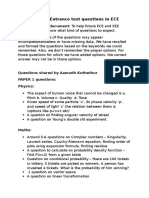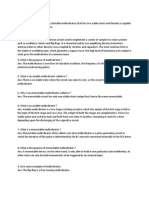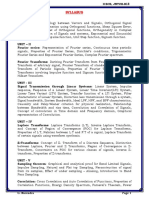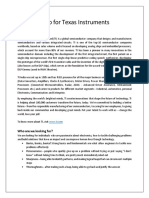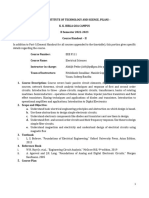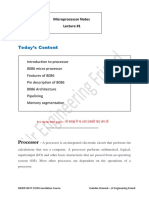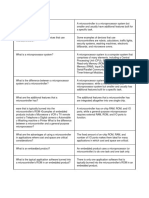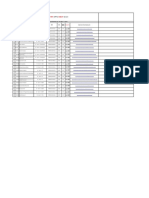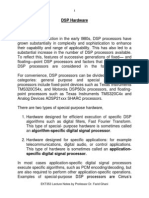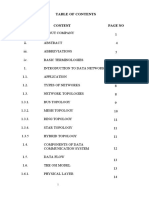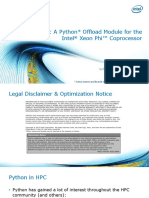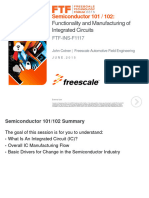100% found this document useful (1 vote)
4K views8 pagesPrep For TI - Analog (With Sample Questions)
Texas Instruments (TI) is a leading global semiconductor company focused on analog chips and embedded processors. TI pioneered many innovations in semiconductors and integrated circuits. TI India was established in 1985 and conducts R&D for TI's major business units including analog and embedded processors serving various market segments. TI is committed to responsible manufacturing, caring for employees, and developing talent to shape the future of technology and help customers transform the world.
Uploaded by
b21215Copyright
© © All Rights Reserved
We take content rights seriously. If you suspect this is your content, claim it here.
Available Formats
Download as PDF, TXT or read online on Scribd
100% found this document useful (1 vote)
4K views8 pagesPrep For TI - Analog (With Sample Questions)
Texas Instruments (TI) is a leading global semiconductor company focused on analog chips and embedded processors. TI pioneered many innovations in semiconductors and integrated circuits. TI India was established in 1985 and conducts R&D for TI's major business units including analog and embedded processors serving various market segments. TI is committed to responsible manufacturing, caring for employees, and developing talent to shape the future of technology and help customers transform the world.
Uploaded by
b21215Copyright
© © All Rights Reserved
We take content rights seriously. If you suspect this is your content, claim it here.
Available Formats
Download as PDF, TXT or read online on Scribd
/ 8










